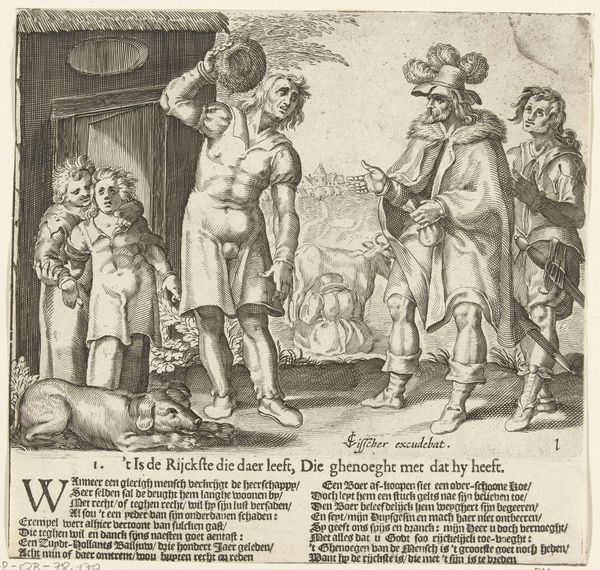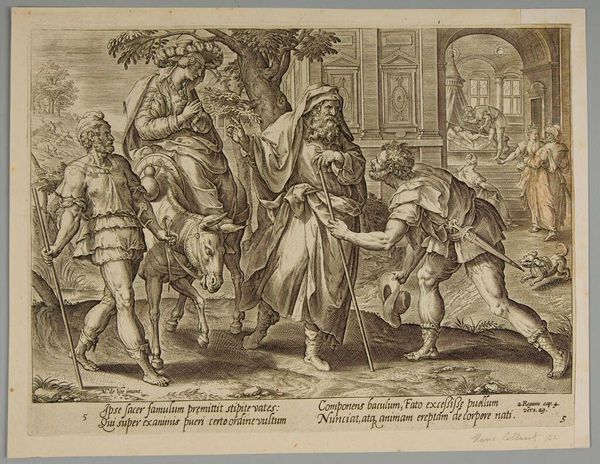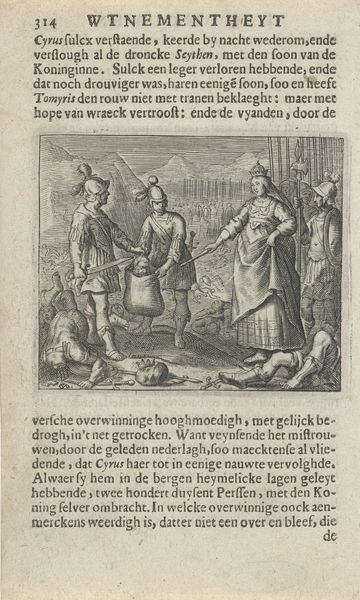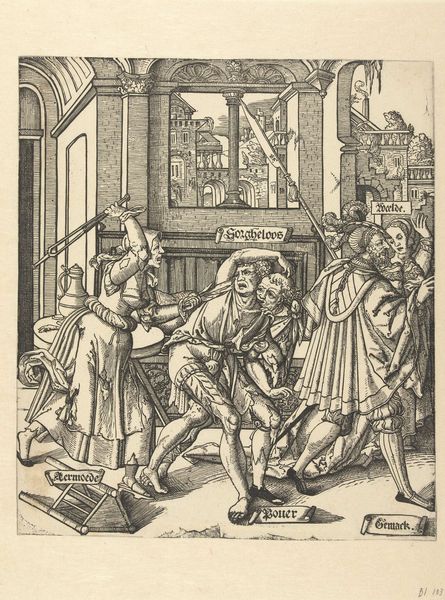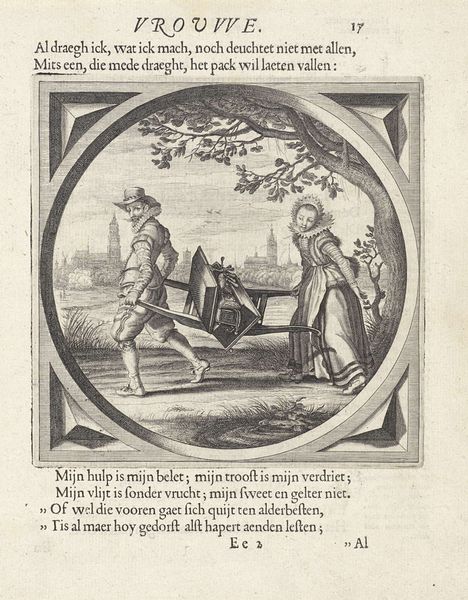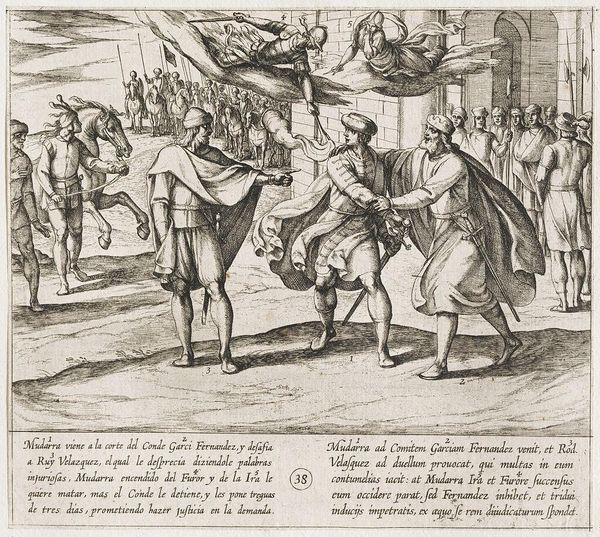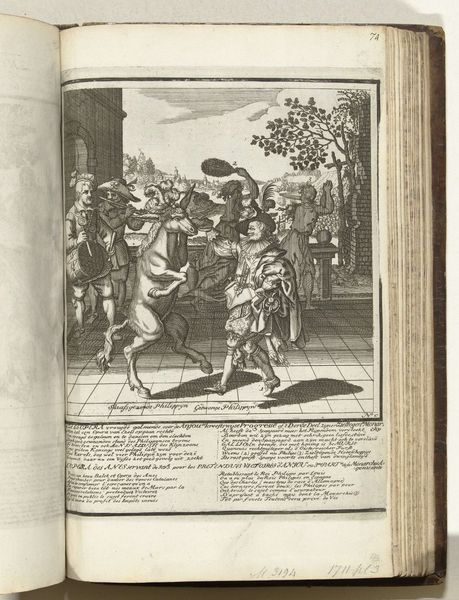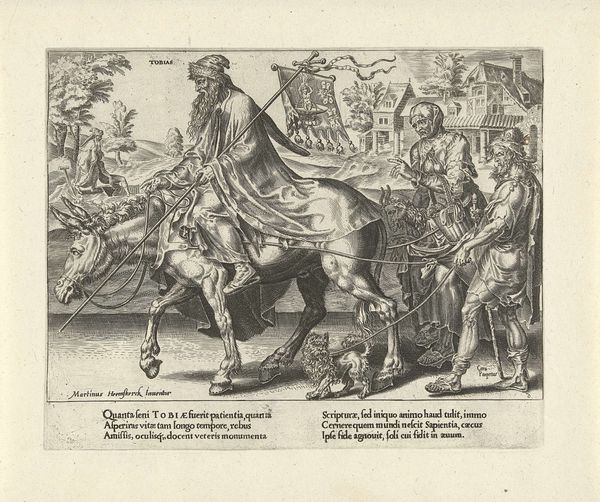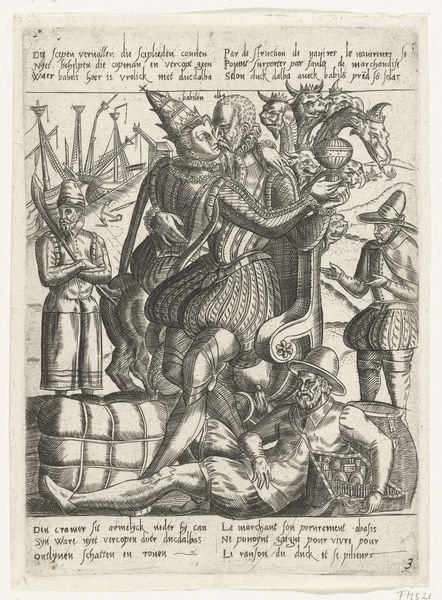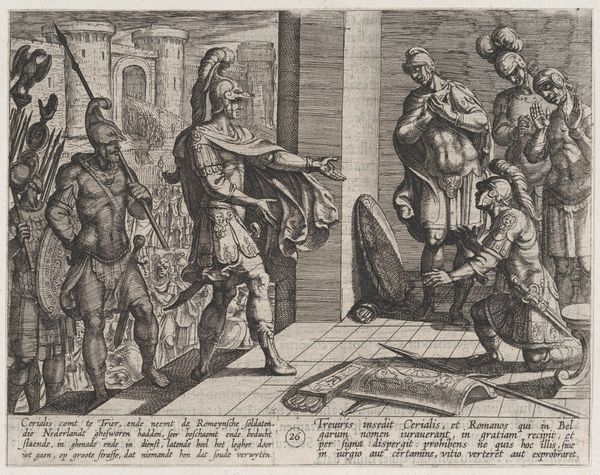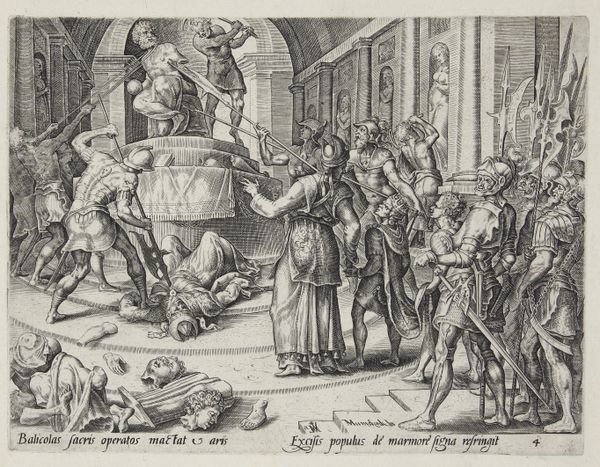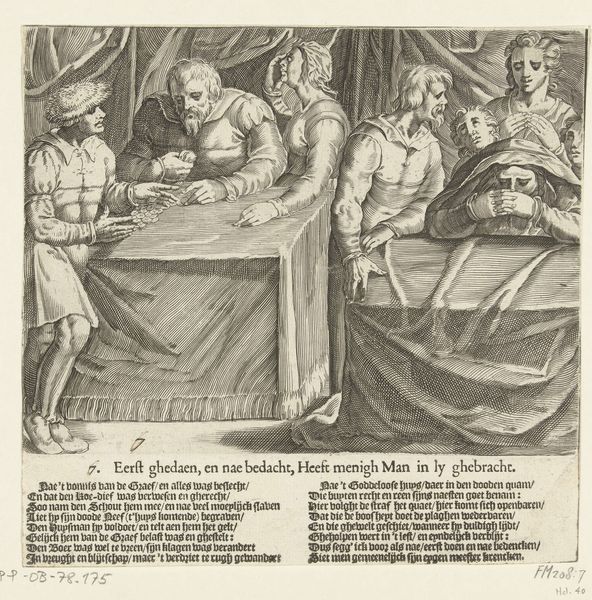
De schout van Dordrecht ontvangt de brief van de graaf 1613
0:00
0:00
print, engraving
#
narrative-art
# print
#
genre-painting
#
history-painting
#
engraving
Dimensions: height 179 mm, width 190 mm
Copyright: Rijks Museum: Open Domain
Bartholomeus Willemsz. Dolendo created this engraving, "The bailiff of Dordrecht receives the letter from the count," sometime in the early 17th century. As an engraving, it is made by cutting lines into a metal plate, inking the surface, and then wiping it clean so that ink remains only in the incised lines. The print is then made by pressing paper against the plate. Consider the amount of labor involved in such a work. The artist needed to be skilled in metallurgy, draftsmanship, and the use of specialized tools to achieve its intricate detail and tonal range. The final print is a testimony to the engraver's skill and dedication, but also a repeatable product. Engravings like this one played a crucial role in disseminating information and ideas during the early modern period. They were a relatively inexpensive and efficient means of mass production and contributed to the growth of print culture and the public sphere. This particular print hints at the rising merchant class, the beginnings of political bureaucracy, and, of course, the ever-present class system.
Comments
No comments
Be the first to comment and join the conversation on the ultimate creative platform.
